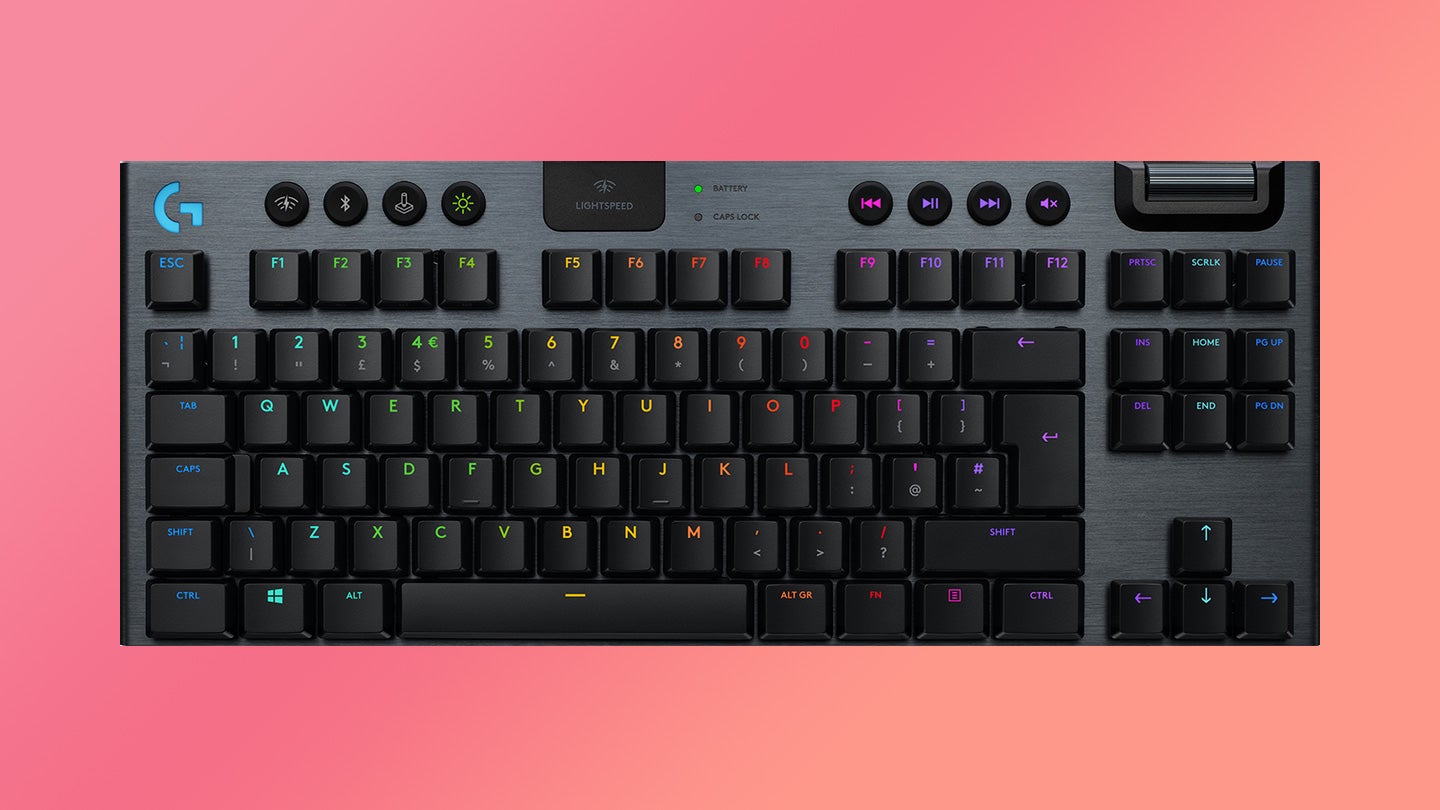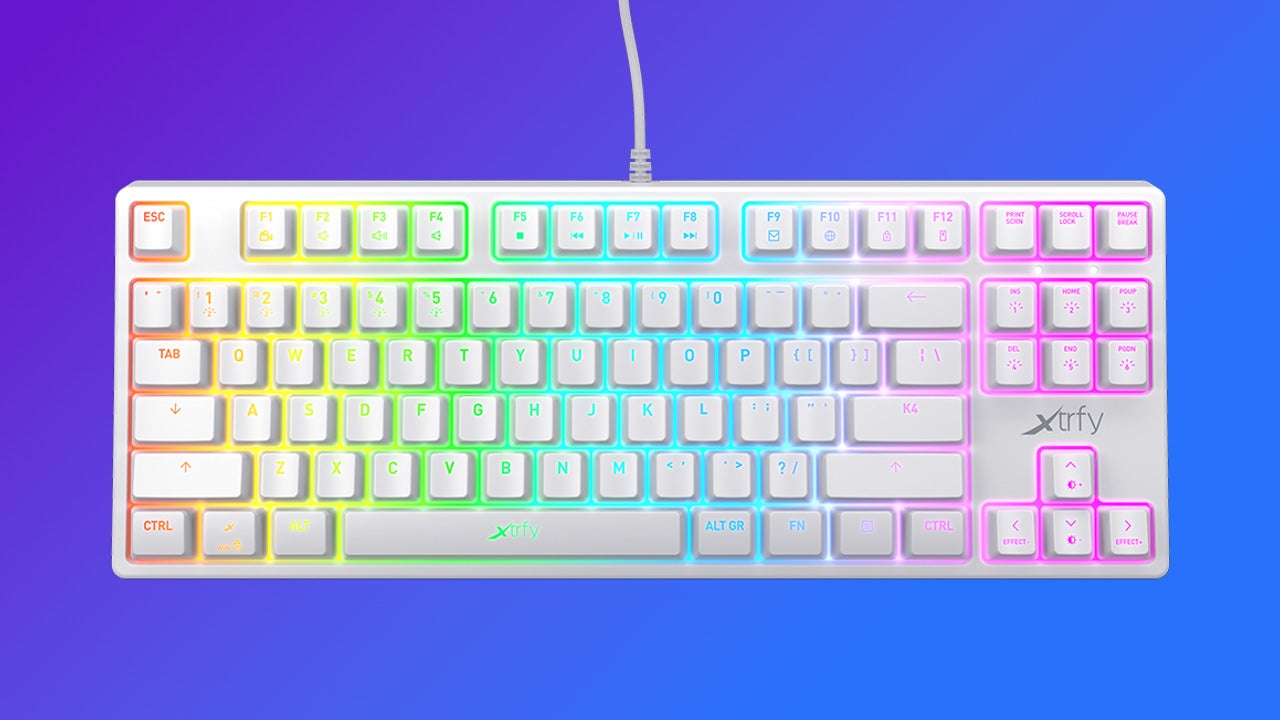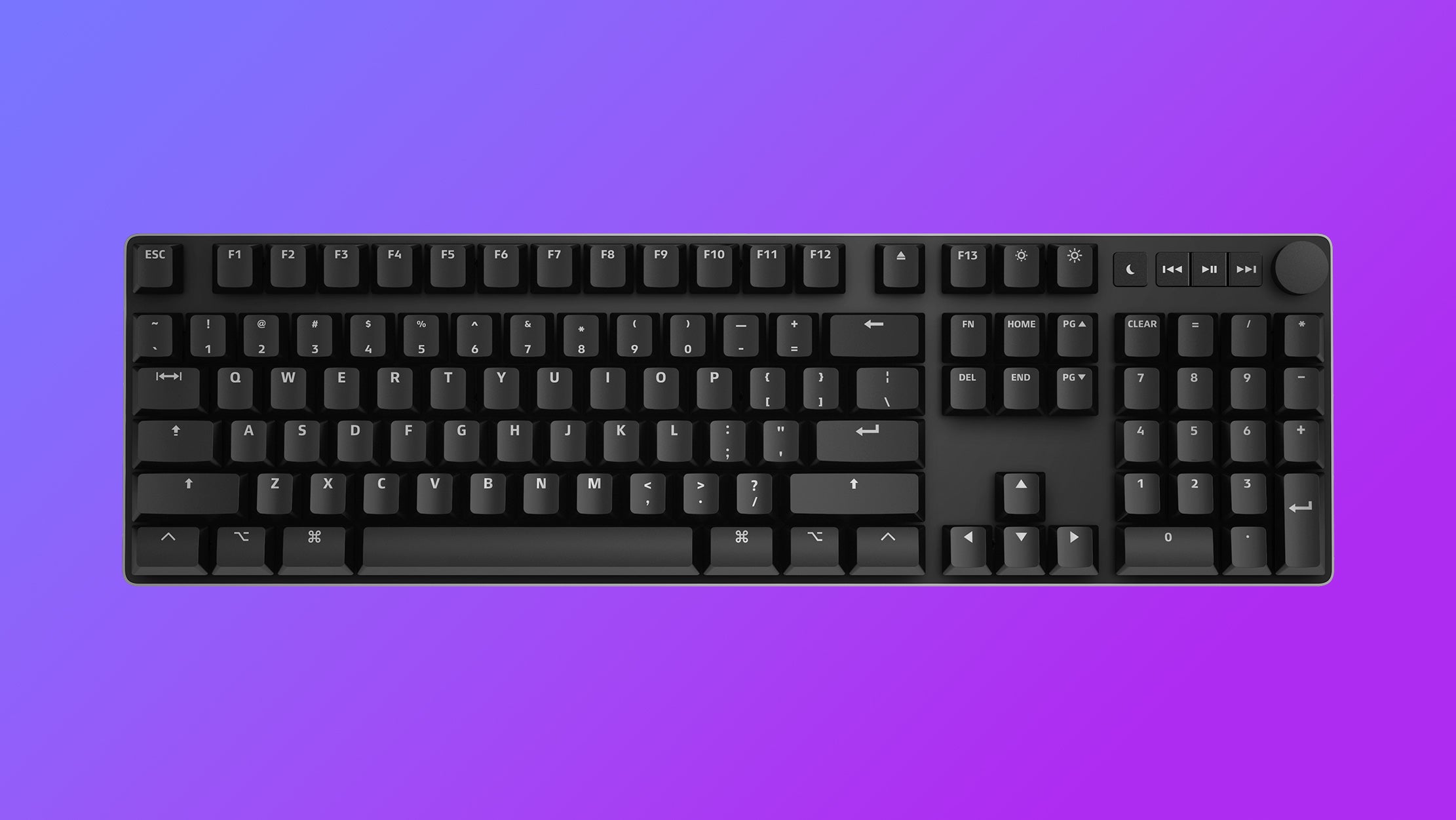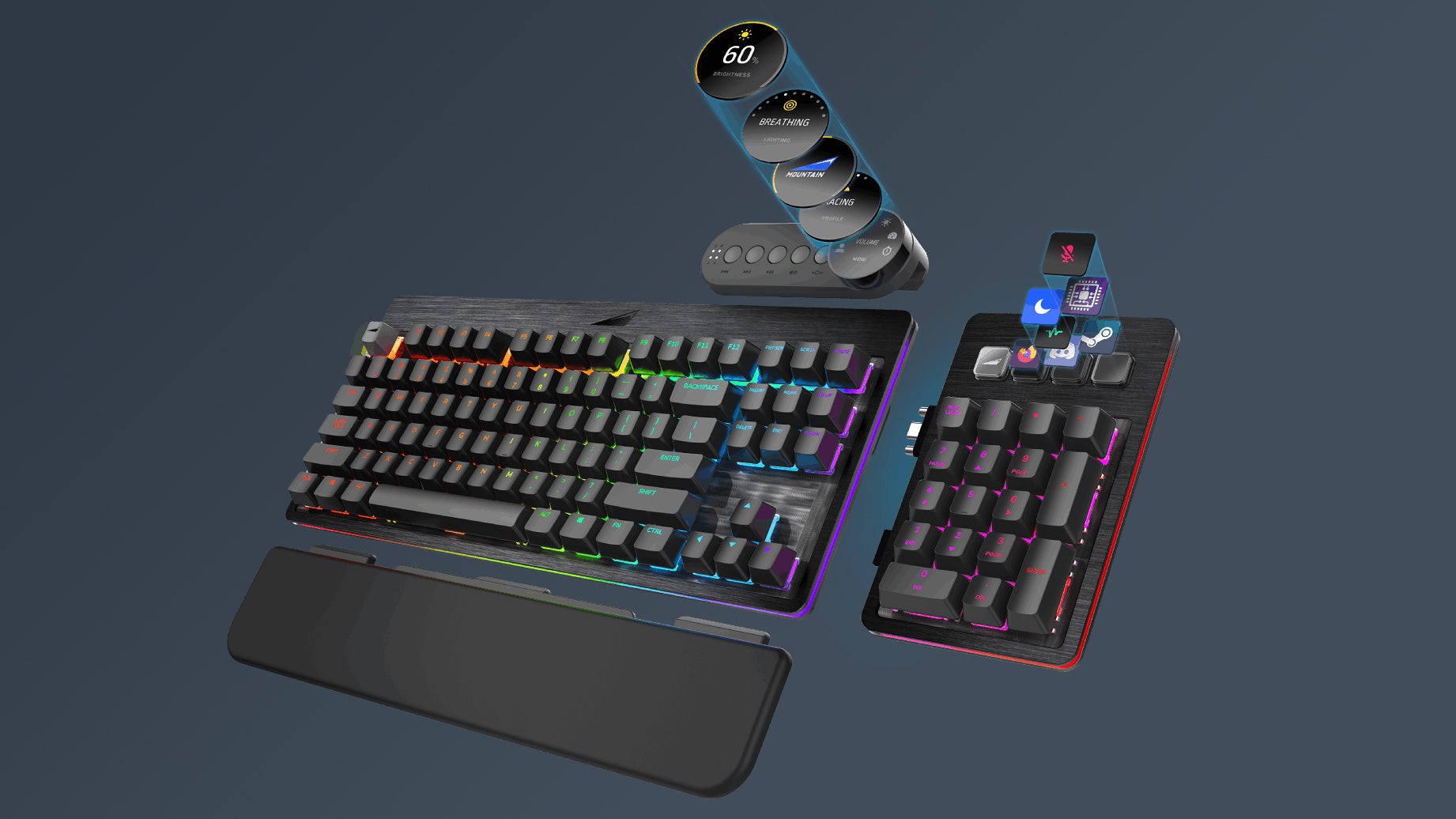We’ve updated this article as of fall 2022 after testing more than three dozen new keyboards, adding new options for wireless and low profile models, modular keyboards offering deep customisation and high-end premium keyboards with unique features and eye-catching designs. Whether you’re looking for the ultimate gaming keyboard, a surprisingly solid budget offering or just something to code on, we’ve got you covered. Let’s take a look at the ten best mechanical keyboards on the market, all tried and tested by Digital Foundry. Note: The pictures of each keyboard show either a UK or US layout, but I’ve linked to the appropriate regional layout wherever possible - so don’t worry if you see a keyboard with a different-sized Enter key than what you’re used to! Click the links below to jump right into the category you’re most interested in. We’ve chosen keyboards for programming, gaming, building yourself and much more, so take a look. If you’re not sure, scroll on to browse our full selection of recommendations! Thankfully, a cheaper option is also available. The £156/$160 K70 RGB Pro offers its own advantages - namely an 8000Hz polling rate of interest to competitive, high-refresh-rate gamers and a detachable USB-C cable - but comes without the macro keys, USB passthrough and the added RGB lighting strip of the K95 Platinum XT. Given that you still get the same core features like a full-size layout, PBT keycaps and excellent RGB lighting, the K70 RGB Pro is a strong alternative - especially as more price drops are likely to come as the keyboard gets a bit older. Beyond the form factor, Fnatic have done well to nail the details here as well. The stabilisers on larger keys are pre-lubed for silent and easy operation, the USB-C port is offset to the left to ensure the cable doesn’t interfere with your mouse and the legends on each keycap are inscribed with a legible font that feels more grown-up than those on most gaming keyboards. The switch housings are even transparent and two extra LEDs are embedded beneath the space bar to ensure that the customisable RGB lighting is evenly distributed throughout the board. I particularly liked the inclusion of a ‘competition mode’, which sets to the lighting to dim orange and locks the Windows key. The only downsides I’ve discovered while testing the Streak 65 have concerned the ‘Fnatic OP’ software, which is still in active development. The app crashed a few times while changing lighting modes, didn’t permit a single colour to be set and didn’t offer an option to change the four numbered macro keys to act as their listed secondary functions (Insert, Delete, Page Up, Page Down). (There’s a Function lock key combo, but this also changes the arrow keys to control the music - not ideal for text editing.) None of these are dealbreakers, but considered together they represent the only minor forthcomings I have about recommending this narrow keyboard to a wide audience. Altogether, this new tiny Streak is every bit as easy to love as its bigger brothers and certainly among the best gaming keyboards on the market. Like other 60 percent boards, there’s no f-key row, no num-pad, no nav cluster and no arrow keys. That results in a beautifully clean keyboard that takes up minimal desk space, while still allowing access to the excised functions via a Function layer. As 60 percent is an aesthetic as much as a practical choice, it’s nice to see Razer offer both black and white colour options for the keyboard’s chassis and keycaps - and a completely standard layout that allows for custom keycap sets to be installed. Similarly, it’s great to see a removable USB-C cable, allowing fans to install custom-made cables to further customise their board. Of course, the Huntsman Mini doesn’t get a spot on our list just for looking nice. It also feels great to use, with Razer’s individually-stabilised optical switches delivering consistent feedback with minimal key wobble. We tested a unit with soft linear red switches with a 1mm actuation distance and 40g actuation force, but clicky purple switches with a 1.5mm actuation distance and 45g actuation force are also offered. The keycaps themselves are also unusually high quality, made from PBT with shine-through legends, so they feel great and won’t succumb to the shiny patches that can afflict lower-quality ABS keycaps. As well as these unique switches, the Huntsman Mini also sets itself apart with its Synapse software, which allows you to set intricate custom lighting modes - something impossible on keyboards that can only switch between a few preset effects. You can also synchronise your lighting with other RGB-encrusted Razer peripherals or supported Razer Chroma games, which is a nice bonus. The Lightspeed wireless connection worked perfectly in our testing, providing the same wired feel as Logitech’s G Pro Wireless gaming mouse. Battery life was also strong, at around 40 hours with backlighting at max brightness - ten more hours than the full-size G915. (If you turn down the backlight, the G915 TKL manages over a thousand hours!) Bluetooth is also available, which adds more latency but allows the keyboard to work with devices like phones and tablets; it’s possible to switch between Bluetooth and Lightspeed connections with a press of a button which makes it a convenient companion for a smartphone, iPad or laptop without a full-size USB port. Elsewhere, Logitech has paid an impressive amount of attention to detail. The aluminium alloy body of the G915 TKL feels incredibly robust despite its thin design, with softly rounded corners and a comfortable “zero friction” volume roller in the upper right corner. The tenkeyless design means that there’s no dedicated macro keys or number pad, as we saw on the full-size G915, but there are still media controls beneath the volume roller and various profile settings along the top. RGB backlighting is included beneath each key, which of course can be set to a single colour, turned down or disabled entirely if you prefer. Full-height alternative: Razer BlackWidow V3 Pro If you prefer the feel of full-height mechanical switches, the £154/$230 Razer BlackWidow V3 Pro is your best bet. It sports a gorgeous full-size layout, a wrist rest, a convenient volume wheel and media keys, a long-lasting battery and your choice of 2.4GHz wireless and Bluetooth support. Razer’s software is more advanced than Logitech’s, so this might be a better choice if you want to set intricate or game-specific RGB lighting effects. Both clicky/tactile (Razer Green) and linear/silent (Razer Yellow) switch options are available; we used the clicky version in our testing and had a lovely time typing and gaming at maximum volume. If you can get on with the relatively restrictive 60 percent size layout, then this innovative indie keyboard is well worth a look. The aluminium used on the top and bottom makes the keyboard extremely resistant to deck flex; it feels as well-built as an old IBM Model M but in a much more compact form factor. USB-C is also included, with a non-recessed port that means that pretty much any USB-C data cable can be used. The black and grey PBT keycaps provided with the board look great, and the entirely standard layout means that you can swap them for a set of custom keycaps in the colour or material of your choice without difficulty. An RGB wave lighting effect is enabled by default, but there are several calmer presets available and you can use Drop’s configurator to make your own custom key layouts and lighting settings. This is a powerful option for advanced users, but lacks the accessibility of software from more prominent keyboard brands. All things considered, the CTRL is a fantastic keyboard for gaming or programming with a nice clean aesthetic. For something a bit cheaper, more widely accessible and with easier (if more limited) software, consider our previous picks for this category - the HyperX Alloy Origins or Alloy Origins Core. The bright RGB backlighting looks great too, especially as you can control all of the effects on the keyboard with no software required. As well as backlighting controls, you can also adjust the volume, access media controls or launch common programs using the Function (Fn) layer. Xtrfy’s attention to detail is also impressive. For example, rather than using expensive but trendy PBT keycaps that would raise the price, the Swedish company has found a middle ground with thicker-than-normal ABS keycaps that provide more durability and a nicer feel than standard ABS caps. Each stabiliser is oiled to reduce noise, and combined with foam padding in the bottom of the chassis, the K4 TKL is actually reasonably quiet for a mechanical keyboard. The key legends are also neat and tidy, with even the secondary functions clearly visible. These small details are often ignored, so it’s great to see them taken care of here. There are three colour schemes available for the K4 TKL: black, white and “retro”. We tested the latter, and the off-white, grey and red keycaps provide a unique look that we really dig. If you’re after a well-made keyboard for gaming that doesn’t cost the earth, then the Xtrfy K4 TKL comes highly recommended. A full-size model, simply titled the Xtrfy K4, is also available. The Keychron K2 performed excellently in my testing, with a satisfying feel from the Brown Gateron switches, while the aluminium frame looks great and ensures this keyboard can survive quite a bit. This model also comes with full RGB backlighting, including a number of different effects. Given this keyboard’s long feature list and great build quality, it’s a surprise to find that it’s also among the most affordable keyboards in its category. The deluxe model with an aluminium frame and RGB costs $89 plus shipping. Swap the metal frame for plastic to save $10, and chop another tenner off the price by opting for white backlighting instead of RGB. The fact remains that there simply aren’t a lot of dedicated mechanicals for MacOS, which is arguably why the MacTigr exists in the first place. The best way to actually describe the MacTigr is that it’s a ’thoughtful’ keyboard - Das has put every effort in to make it as functional and as lovely to use as possible. You’ll find a twiddly volume wheel with tactile-feeling multimedia playback buttons, as well as an entire function row to play with, complete with additional keys for things like sending your Mac to sleep or adjusting screen brightness on the fly. Did I also mention you get a pair of USB-C passthrough ports on the back of the board? It seems Das really has thought of everything. Keeping in with that pleasant user experience theme, it’s also a keyboard that offers a smooth and light keypress with Cherry MX Low Profile Red switches. The MacTigr also comes with full N-Key rollover so you can push down as many keys as you want, which is critical for some game genres and otherwise ensures no key presses go unregistered. The keyboard is also supremely built and should last for decades, which is nice. As for bugbears, the lack of any form of key illumination, RGB or not, is a bit of a pain, as is the lack of any software-based configuration to unlock the MacTigr’s true potential. It would have been nice to see Das’ own Q software bundled here, but alas, it’s not to be. And of course, there’s the $219 asking price. This is up there with some of the most expensive and therefore premium mechanicals out there, and it arguably doesn’t seem like you get much outside of the keyboard for that money - especially given the existence of Keychron’s Mac-friendly keyboards such as the K2, our pick as the best compact mechanical keyboard out there. While these keyboards may be better value though, the MacTigr remains the superior choice. The keycaps are made from durable double-shot PBT, while the switches beneath come in seven different flavours of Cherry MX from clicky Blues and tactile Browns to quiet Silent Reds. The typing experience is generally excellent and the compact layout makes sense - although it may require some mental effort if you’re used to a larger keyboard with F keys or a numpad. The build quality is impressive too, given the reasonable price, but the small frame means that the keyboard is still portable if you want to put it in a backpack or simply carry it into another room. Another nice 65 percent keyboard with retro sensibilities is the $140 Epomaker B21. This one is covered in knobs, with one on each corner to control your computer’s volume and the keyboard’s lighting brightness, and the F keys have been replaced by media controls, a calculator button, three profiles and a Mac/Windows toggle. I don’t think these are necessary more helpful than F keys, depending on the workload, but they certainly contribute to a unique design. There are round corners and soft colours everywhere here, and if you like the look this Bluetooth and USB-C combo keyboard certainly does the job. The Two HE is a solid keyboards even if you use it entirely digitally, with a clean ‘floating keys’ design, programmable RGB backlighting and a comfortable full-size layout with four extra keys. The use of an advanced Hall Effect sensor also means that key presses should be registered faster than traditional switches, especially when combined with the keyboard’s ’tachyon mode’ that strips out nonessentials like RGB effects for a lightning-fast response. For more on this special keyboard, check out our full Wooting Two HE review! The Everest Max is extremely convincing as a full package, and thanks to its LCD keys and the Base Camp software it can function as a mini Stream Deck alternative for controlling scenes in OBS. I found the software package a little flaky as it’s still under active development, but I didn’t encounter any serious bugs and the possibilities here are powerful indeed - with comprehensive controls for lighting, key binding, macros, the LCD wheel and multiple profiles. The keyboard itself is a pleasure to use too, especially with that left-handed-style layout with the numpad on the left and the multi-function wheel in the upper right. Having quick access to volume controls as well as lighting selections, a clock, PC stats and even an APM (actions per minute) counter is entirely novel and I’d love to see this on more boards in future - it’s much more powerful than the OLED screen on the likes of the SteelSeries Apex Pro, which includes some similar functions but is much clumsier to use and is mostly relegated to showing a custom graphic in my experience. So: a very interesting keyboard and I’m curious to see how the package develops further over time! I’d love to see more add-ons available that really push the boundaries of what the mechanical keyboard is capable of - and the LCD keys built into on the numpad make this a really canny pick for streamers and content creators already. Based on my testing, the chief advantages of the UHK over the Ergodox are two-fold: the closer-to-standard layout is easier to learn and the keyboard is more easily programmable, thanks to an excellent UHK Agent software. It is trivial to change layouts on the fly, with the small LED display in the upper left of the keyboard reminding you which layout is active. Windows, Mac and Linux are all well supported, with preset layouts for Qwerty, Colemak and Dvorak. A wide range of case colours, mechanical switches, key legends and accessories are also available - including click-into-place add-ons like thumb keys, touchpad, trackpoint or trackball. A palm rest is also available, adding more options for tenting, tilting and otherwise positioning the keyboard in an ergonomically optimal way. Sadly, key backlighting is not offered currently, something that is possible with the Ergodox Glow. Regardless, the UHK is a well-designed ergonomic keyboard worth considering for anyone that relies on a keyboard for work. With that, our recommendations come to an end. Of course, even if we chose 200 keyboards we’d still not scratch the surface of the many options available - so if we didn’t cover your favourite keyboard, it’s nothing personal. If you think we’ve missed a good option though, feel free to get in touch with me @wsjudd. I hope you’ve found this article useful, and I look forward to the feedback. If you haven’t read it before, I’d also encourage you to check out our feature on how - and why - mechanical keyboards become popular in the first place.















